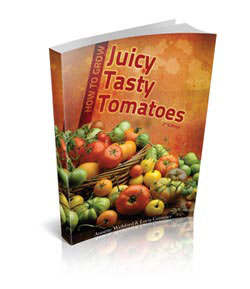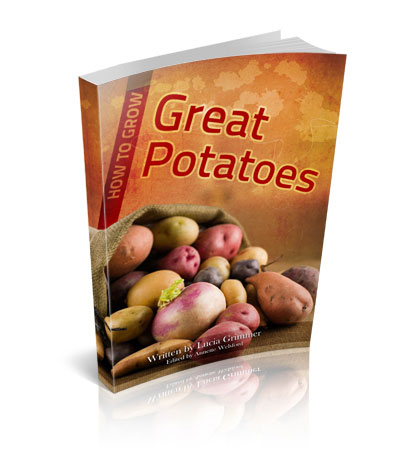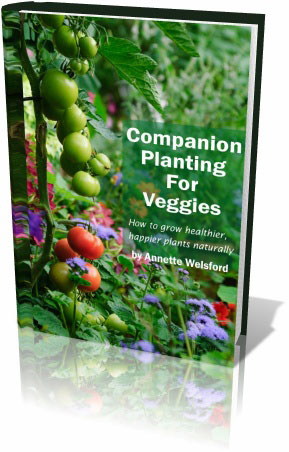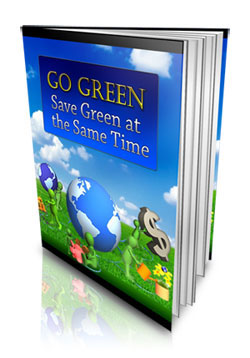Growing Tomatoes Organically
Organic gardening has often been thought of as the preserve of eccentrics who refused to accept the self-evident truth that twentieth-century progress had transformed the ancient art of gardening. Why did they fiddle around with compost and garlic spray when modern fertilisers and insecticides were so much more efficient and easier to use?
Opinions have changed, and now most gardeners regard ‘organic’ as the most sensible way to garden, as the benefits of twentieth-century technology have come at a price. Chemical sprays and fertilisers have done much damage to the environment. We might not think that we can do much to change the world, but we can take sensible care of the one part of the environment we control: our own garden. And by doing so, we do make a difference, particularly when you add up all the home gardens in the country (and indeed the world), they represent a fair chunk of our environment.
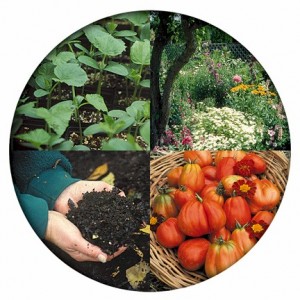 Organic gardening is simply the application of common sense such as people have been practising for centuries. It involves digging manure into a planting bed, putting kitchen scraps onto a compost heap, using blood and bone on your tomatoes instead of sulphate of ammonia. There is so much satisfaction to be gained from spreading a rich compost you have made yourself rather than a bag of chemical fertiliser. You know that it will benefit not just the immediate growth of your plants, but the health of your soil for years to come. You are working hand in hand with Nature, in harmony with her own rhythms.
Organic gardening is simply the application of common sense such as people have been practising for centuries. It involves digging manure into a planting bed, putting kitchen scraps onto a compost heap, using blood and bone on your tomatoes instead of sulphate of ammonia. There is so much satisfaction to be gained from spreading a rich compost you have made yourself rather than a bag of chemical fertiliser. You know that it will benefit not just the immediate growth of your plants, but the health of your soil for years to come. You are working hand in hand with Nature, in harmony with her own rhythms.
In order to maintain a healthy organic garden it is worth spending a few minutes reviewing the cycle of life in the garden, so that you understand all the elements and their interdependence on each other. When it is in balance, it works perfectly. If one or more elements are out of balance, you will have problems.
In a richly forested area where a huge variety of plants grow abundantly without human intervention, you will notice that the forest floor will be covered by a thin layer of fallen leaves. The leaves are decaying and beneath them is the multitude of living that are digesting the organic matter and in their turn adding their own dead bodies to the soil. They range from worms and small insects down to microscopic bacteria and fungi, without whose presence the recycling process could never occur.
Why You Need Humus
The result of the work of all these organisms is the wonderful substance called humus. It is a sort of black colloid and gives fertile soil its dark colour and sweet earthy smell. It sticks to the mineral particles that form the framework of the soil and fills in the gaps so that water and dissolved nutrients are held within the structure, to be made available to plants as they are needed.
Humus is gradually digested and yields its nutrients to plants, and unless it is constantly replaced it vanishes and the soil dies. The soil lives as long as the recycling process is not interfered with – but interference is precisely what happens in a garden. We don’t return everything to the soil. We remove weeds to the compost heap, we eat our vegetables and send our own wastes elsewhere. We cut flowers and throw them in the garbage; we burn prunings and every time we do, we diminish the humus supply. We may even add poisonous chemicals that kill the micro-organisms. Clearly, we need to work to restore the balance.
Unless you replenish the organic matter from which the humus is continually being created, the soil will gradually die. Added chemical fertilisers boost the growth of your plants for a little while, but they do not nourish the living creatures of the soil, nor do they create humus.
Chemical fertilisers have other problems as well. To make them soluble, they contain all sorts of things the garden doesn’t need. Sulphate of ammonia certainly yields nitrogen from the ammonia, but the sulphate part poisons worms, bacteria and fungi. Organic matter – material that was once alive – must be added continually to feed the humus.
Make your own compost by recycling as much organic matter as possible from the garden itself. Fallen leaves, vegetable stalks, spent flowers – nothing should be wasted. Then bring in other matter from outside, your vegetable scraps, animal manure, blood and bone, lawn clippings, hair, newspaper, straw, etc. Refer to the chapter on composting for tips on making the ideal compost mix.
Adding Organic Matter
Tomatoes love lots of compost and manure. Ideally this should be dug into your site at least eight weeks before planting to give it time to break down and give good texture to your soil as well as generate beneficial microorganisms in your soil. Time is also required for the nutrients in the compost or manure to be released. Digging the compost or manure into the soil early will most likely cause a whole lot of weeds to grow which can then be weeded out before planting your tomatoes.
If you are preparing a new tomato bed, spread your compost and fork it in to mix it with the soil. Around established plants where you don’t want to dig deep and disturb roots, spread it onto the surface as mulch. As it decomposes it will sift down into the soil and the worms will come up and take it down with them.
A more-or-less permanent mulch keeps the soil cool, smothers any weeds and conserves moisture. It takes time to build the humus, especially if it has been depleted by wasteful gardening and poisoned by indiscriminate use of insecticides, fungicides and artificial fertilisers. It takes time to get used to the idea of feeding the soil and not the plants.
The demand for compost is greatest late winter when planting beds are being made up and through spring when mulching gets underway for summer, but you can spread your compost as and when it suits you.
Is Compost a Good Fertiliser?
Just how good a fertiliser compost makes depends on how you measure it . The amounts of available nitrogen, potassium and phosphorus (the NPK figures) are rather low and variable when compared to artificial fertiliser. It doesn’t force an instant spurt of growth; its benefit is the long-term
If your soil is naturally low in a particular element, you simply add the required elements to the heap, preferably in a form on which the micro-organisms can work. Anything rich in protein (blood and bone, urine, manure) will add nitrogen; bone meal supplies phosphorus; potash comes from wood ash or seaweed.
How to Find Out More about Growing Tomatoes Organically
The world’s leading Tomato Growing “Bible” – How to Grow Juicy Tasty Tomatoes provides the answers to everything you need to know about growing tomatoes organically. This 80 page beautifully illustrated book contains over 260 photos and covers organic practices, varieties, cultivation techniques, pest and disease control, health effects and more. It has step by step instructions for the novice gardener and advanced trial-based information for the professional grower. Visit www.bestjuicytomatoes.com for further tips and purchasing details.
Tags: growing tomatoes, organic gardening, organic tomatoes, Tomatoes








